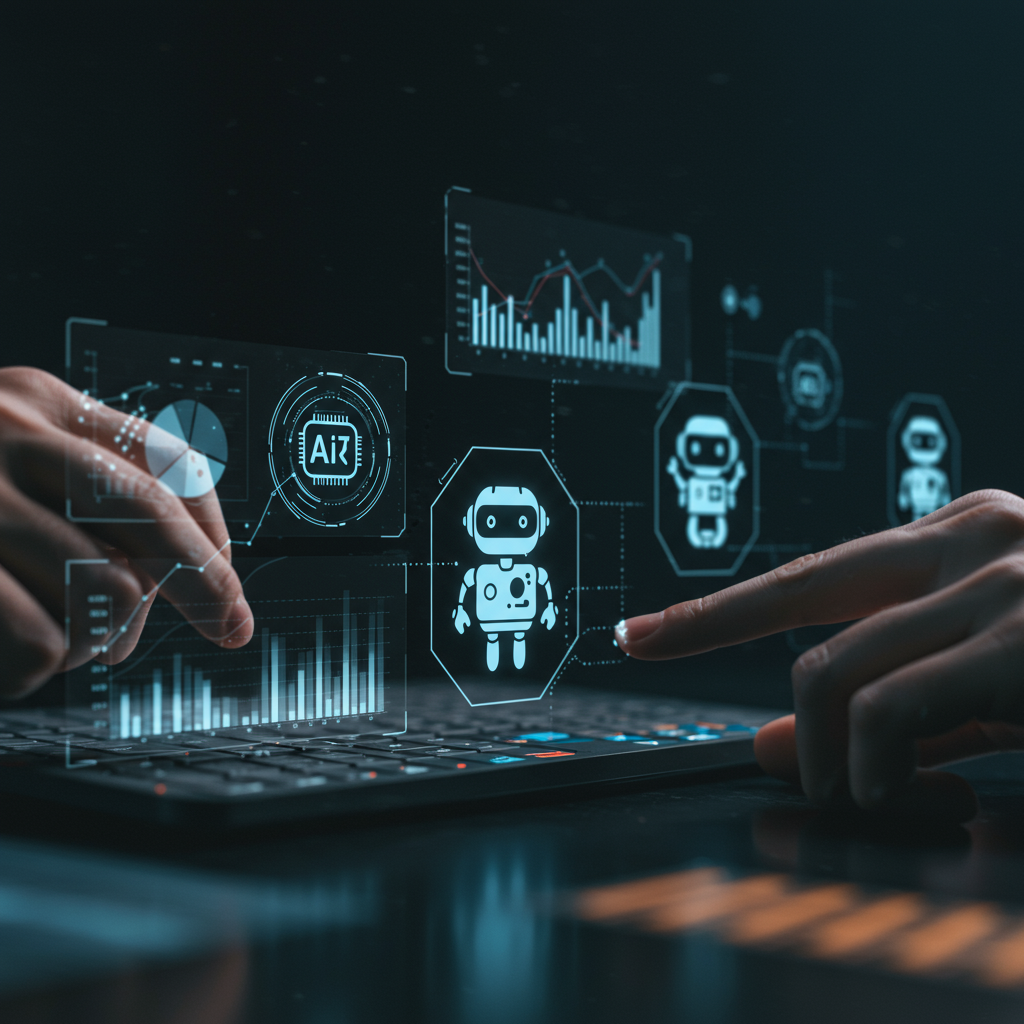
In today’s data-rich business landscape, organizations generate vast volumes of information from multiple sources—CRM systems, social media, IoT sensors, market research, and more. AI bots offer a powerful solution for distilling this raw data into actionable insights. By combining machine learning, natural language processing (NLP), and automation, AI bots can process massive datasets in real time, identify hidden patterns, and deliver recommendations directly to decision makers. This guide explores how to implement AI bots throughout your analytics lifecycle, helping you optimize operations, reduce bias, and accelerate strategic outcomes.
1. Understanding AI Bots and Data-Driven Decision Making

AI bots are software agents powered by advanced algorithms that simulate human intelligence. They automate routine tasks—such as data ingestion, preliminary analysis, and report generation—freeing teams to focus on strategic initiatives. Data-driven decision making means grounding business choices in empirical evidence rather than gut feeling. When integrated, AI bots accelerate every step: collecting structured and unstructured data, applying predictive models, and communicating insights through dashboards or conversational interfaces. Industries from healthcare (predicting patient outcomes) to retail (forecasting demand) and finance (detecting fraud) rely on AI bots to transform raw numbers into clear directions for action.
2. Key Benefits of Using AI Bots for Data Insights
Implementing AI bots in your analytics processes delivers multiple advantages:
- Speed & Scalability: Bots process terabytes of data in minutes, enabling real-time decisions and rapid scaling across departments.
- Consistency & Accuracy: Automated workflows reduce human error and apply standardized business rules uniformly.
- 24/7 Monitoring: Continuous data monitoring helps in anomaly detection, proactive alerts, and instant customer support.
- Cost Efficiency: Reduces manual labor costs and accelerates time-to-insight, improving ROI on analytics investments.
- Enhanced Personalization: Leverages customer data to drive targeted marketing campaigns and product recommendations.
These benefits combine to deliver a competitive edge in fast-moving markets, from streaming services improving user retention to manufacturers detecting equipment failure before downtime occurs.
3. Core Components of AI Bot–Powered BI Systems
Building a robust BI platform with AI bots involves integrating several layers:
- Data Ingestion & Storage: Data lakes and warehouses collect structured, semi-structured, and unstructured inputs via connectors, APIs, and ETL pipelines.
- Data Processing & Quality: Cleansing, normalization, and enrichment steps ensure consistency; metadata management tracks lineage and compliance.
- Analytics & Machine Learning: Predictive and prescriptive models (regression, clustering, reinforcement learning) uncover patterns and optimize decisions.
- Interaction Layer: Dashboards, chat interfaces, voice assistants, and mobile apps allow stakeholders to query data in natural language and view dynamic visualizations.
- Governance & Security: Role-based access control, encryption, and audit trails maintain regulatory compliance (GDPR, CCPA, HIPAA).
Together, these building blocks deliver an end-to-end solution that powers intelligent, data-driven workflows across the enterprise.
4. Implementing AI Bots for Data Collection and Integration
A successful rollout begins with a clear data strategy. Start by mapping your data sources—ERP systems, CRM platforms, web analytics, IoT devices, social media feeds—and define key performance indicators (KPIs). Choose AI bot frameworks that support prebuilt connectors and SDKs for SQL/NoSQL databases, cloud storage (AWS S3, Azure Blob), and streaming platforms (Kafka). Establish ETL pipelines or real-time ingestion processes using APIs, webhooks, or middleware. Enrich data with third-party feeds (market research, demographic data) to add context. Implement data validation rules and deduplication logic to maintain high data quality. Early attention to integration detail reduces friction in later analytics stages and positions your AI bots for reliable insight delivery.
5. AI Bots in Advanced Data Analysis and Pattern Recognition

With clean data in place, AI bots apply statistical methods and machine learning to reveal actionable insights. In supervised learning, models train on labeled data—such as historical sales—to forecast future demand. Unsupervised algorithms group customers into segments based on behavior. Reinforcement learning bots optimize dynamic pricing or supply chains by continuously learning from feedback. NLP capabilities enable sentiment analysis on customer reviews, social posts, and support tickets, surfacing trends and pain points. Combining these techniques allows organizations to shift from descriptive reporting (“what happened?”) to predictive forecasting (“what will happen?”) and prescriptive recommendations (“what should we do?”), underpinning smarter business strategies.
6. Visualizing Data with AI Bots
Data visualization is critical for making complex analytics accessible. AI bots can auto-generate interactive dashboards, heat maps, and infographics tailored to user roles. For example, sales managers might receive region-by-region performance charts, while executives get concise KPI overviews. Advanced bots support voice and text queries—ask “Give me this month’s churn rate” and receive an up-to-date chart. Mobile-responsive interfaces ensure insights are available on tablets and smartphones. Some platforms even offer storyboards: narrative-driven presentations that guide audiences through data-driven conclusions step by step. Democratizing analytics through intuitive visuals accelerates adoption and empowers teams to act swiftly on insights.
7. Ensuring Data Quality and Compliance
Accurate analytics depend on rigorous data governance. AI bots can monitor data lineage, flag anomalies, and enforce validation rules automatically. Implement real-time alerts for missing values or outliers that exceed defined thresholds. For compliance, bots can anonymize personal data fields, manage consent logs, and generate audit reports to demonstrate adherence to regulations such as GDPR, CCPA, or industry-specific standards like HIPAA. Encryption at rest and in transit, along with granular access controls, protects sensitive information. By embedding governance protocols within AI bot workflows, organizations mitigate legal and reputational risks while preserving stakeholder trust in analytics outcomes.
8. Integrating AI Bots with Existing Business Systems
Most enterprises run a mix of legacy and modern applications. To maximize ROI, integrate AI bots seamlessly into workflows via RESTful APIs, message queues, or enterprise service buses. A microservices architecture allows bots to operate as independent services, reducing dependencies and simplifying updates. Low-code/no-code platforms empower business users to configure bots—building chatbots in Slack or Microsoft Teams without deep programming skills. Embedding AI bots directly in CRM tools, project management suites, or collaboration platforms drives higher adoption rates. By delivering insights where users work, you eliminate context switching and accelerate data-driven decision making across departments.
9. Overcoming Challenges and Best Practices
Deploying AI bots at scale can encounter obstacles:
- Change Management: Build AI literacy through training, workshops, and clear communication of benefits.
- Data Silos: Promote cross-functional collaboration and centralized data governance to break down barriers.
- Model Bias & Ethics: Use diverse datasets, algorithmic transparency, and regular audits to mitigate bias.
- Incremental Deployment: Start with pilot projects focused on high-impact use cases before enterprise-wide rollout.
Adopt agile methodologies, involve stakeholders early, and iterate quickly based on feedback. These best practices ensure more predictable outcomes and sustainable adoption of AI-powered decision-making.
10. Measuring ROI and Success Metrics
Demonstrating value is vital for continued investment. Define measurable KPIs such as reduction in decision cycle time, improvements in forecast accuracy, cost savings from process automation, or incremental revenue from targeted campaigns. Conduct A/B tests comparing AI bot–driven decisions against traditional methods. Track user engagement metrics—dashboard logins, query volumes, and satisfaction ratings. Establish feedback loops where insights from bot usage inform model refinements and workflow optimizations. A robust ROI framework helps secure executive buy-in, justify budget allocation, and reveal new areas where AI bots can drive additional value.
11. Future Trends in AI-Driven Decision Making
The AI landscape continues to evolve at breakneck speed. Generative AI models are advancing to create detailed scenario analyses, strategic plans, and narrative reports. Automated machine learning (AutoML) platforms enable citizen data scientists to build custom models without deep coding skills. Edge AI and real-time streaming analytics will bring decision-making capabilities directly to factory floors, retail kiosks, and IoT devices. Explainable AI (XAI) tools are enhancing transparency by providing clear reasoning behind model outputs. Staying ahead of these trends will allow organizations to enhance agility, foster innovation, and maintain a competitive edge in a data-driven world.
12. Conclusion and Next Steps
AI bots are reshaping how businesses collect, analyze, and act on data. By automating routine tasks and delivering real-time insights, they empower teams to make smarter decisions, respond rapidly to market changes, and drive sustainable growth. To get started, evaluate your data environment, prioritize high-impact use cases (such as demand forecasting or customer segmentation), and select AI bot platforms that align with your infrastructure and governance needs. Invest in ongoing training, cross-functional collaboration, and continuous model evaluation. With a clear strategy and iterative approach, AI bots will become a cornerstone of your data-driven decision-making framework—unlocking new opportunities for efficiency and innovation.
AI is transforming the way HR teams operate. Our guide, Revolutionizing HR: How AI Bots Enhance Employee Engagement and Streamline, breaks down the tools and tactics driving this shift.









Leave a Reply